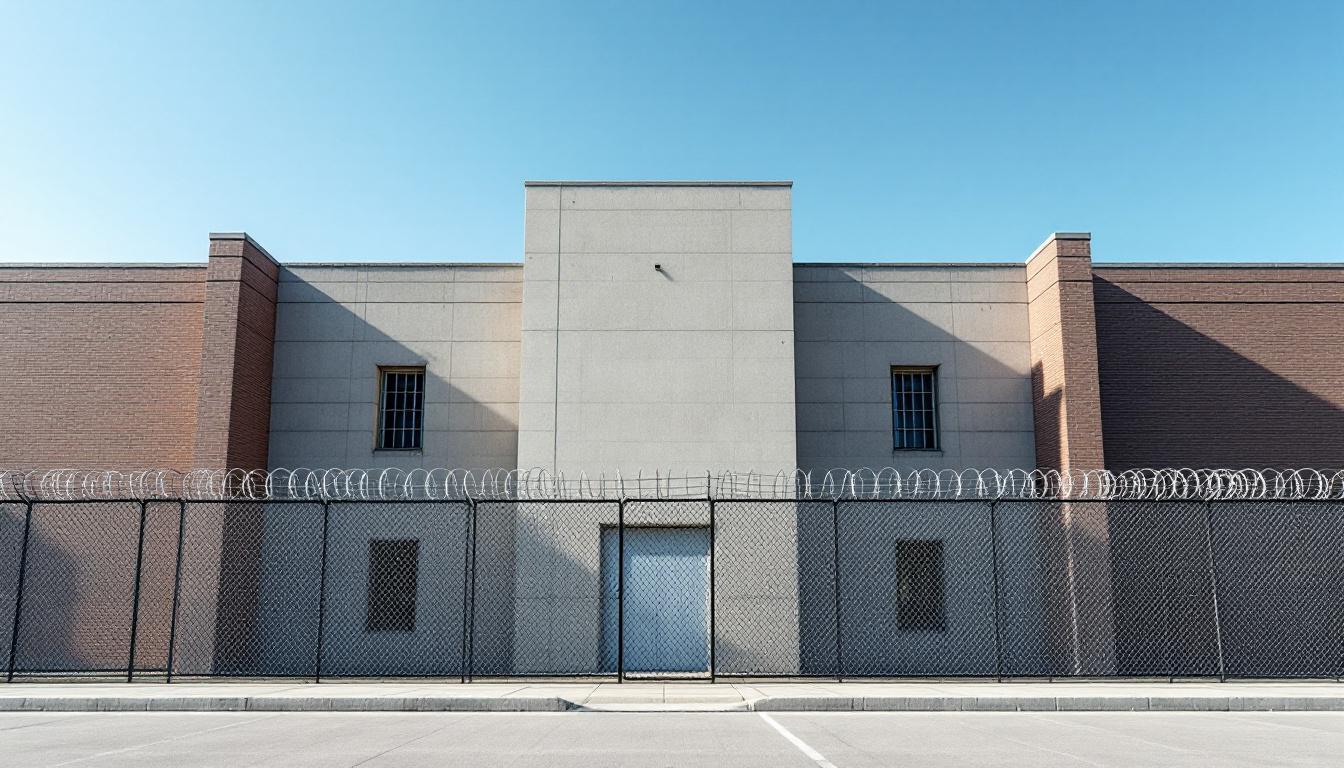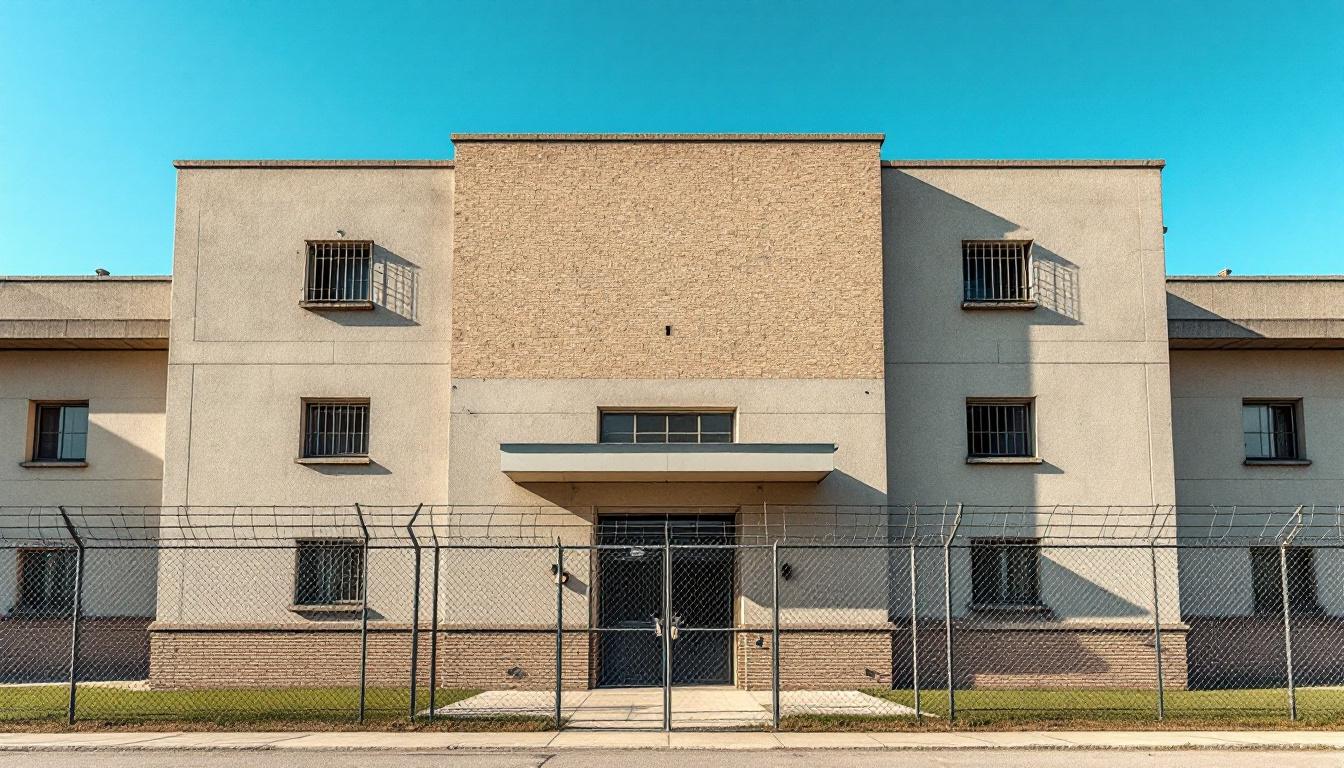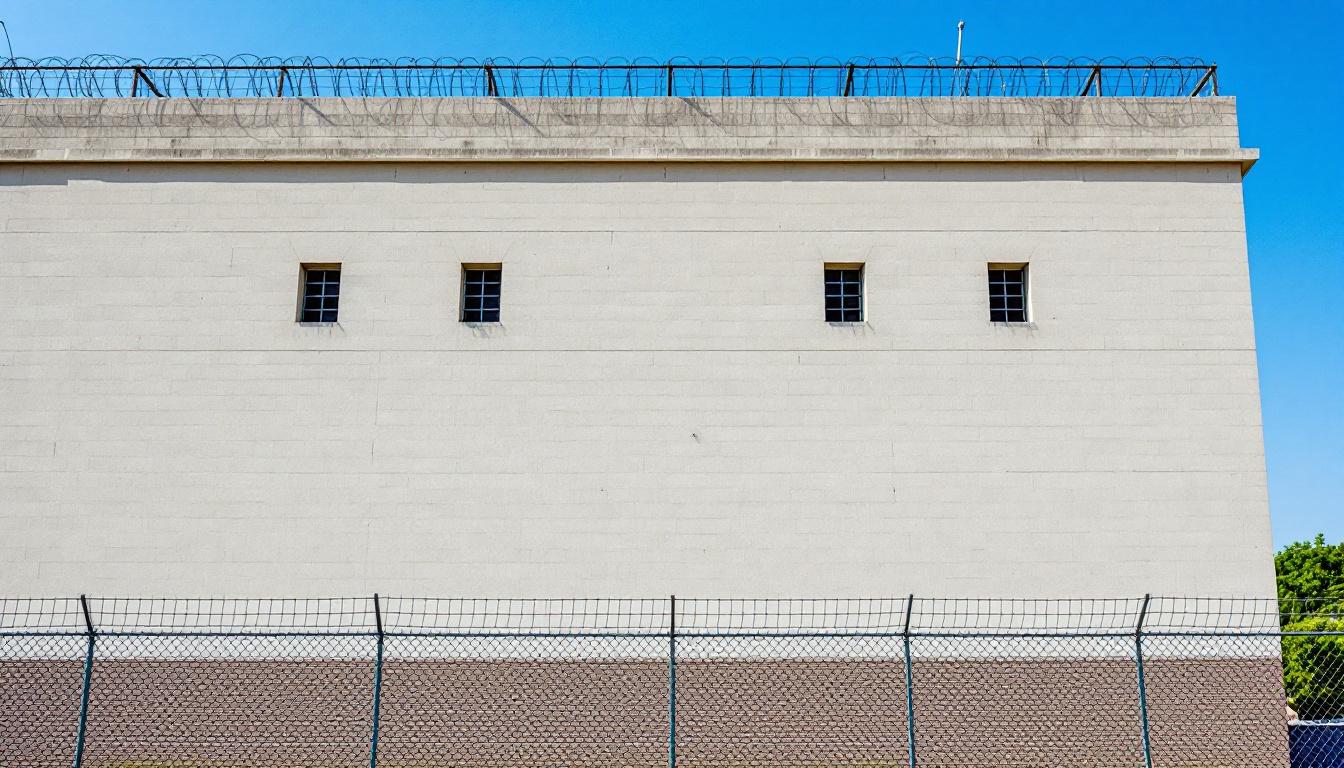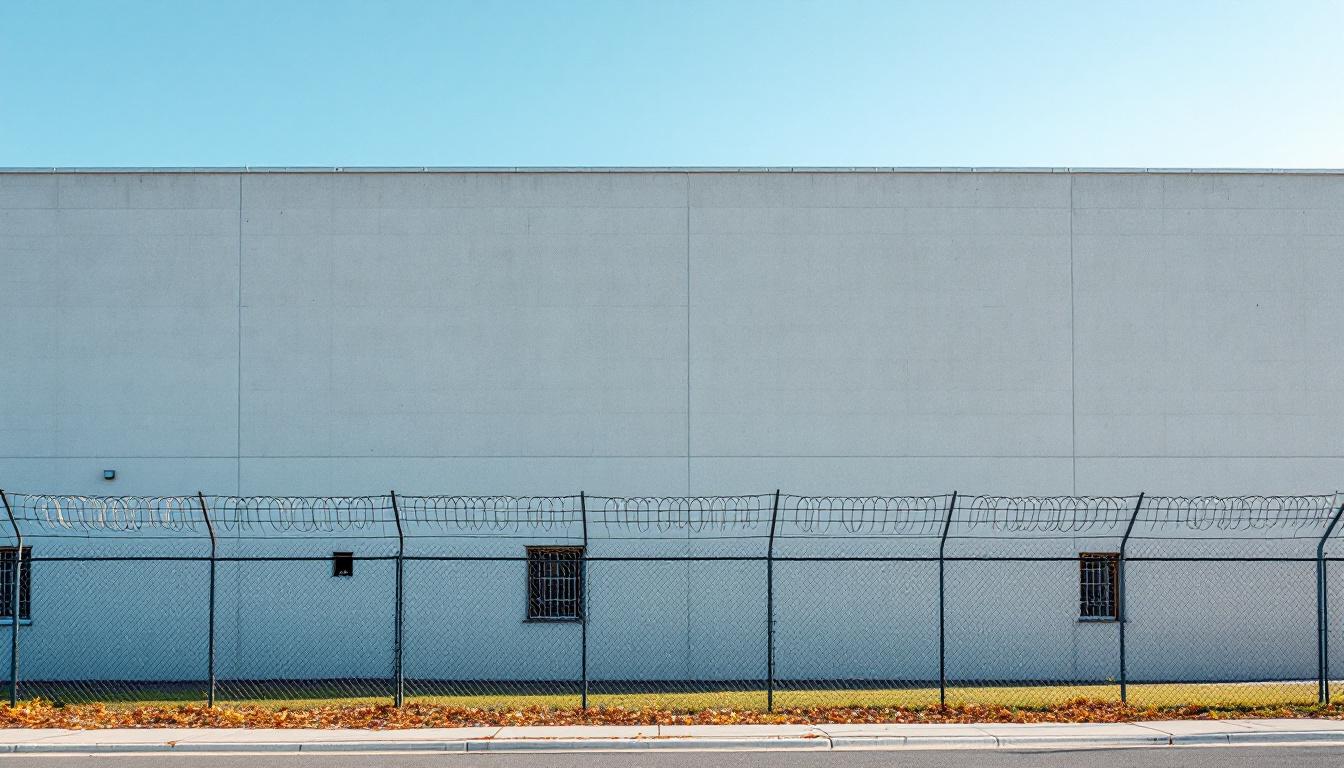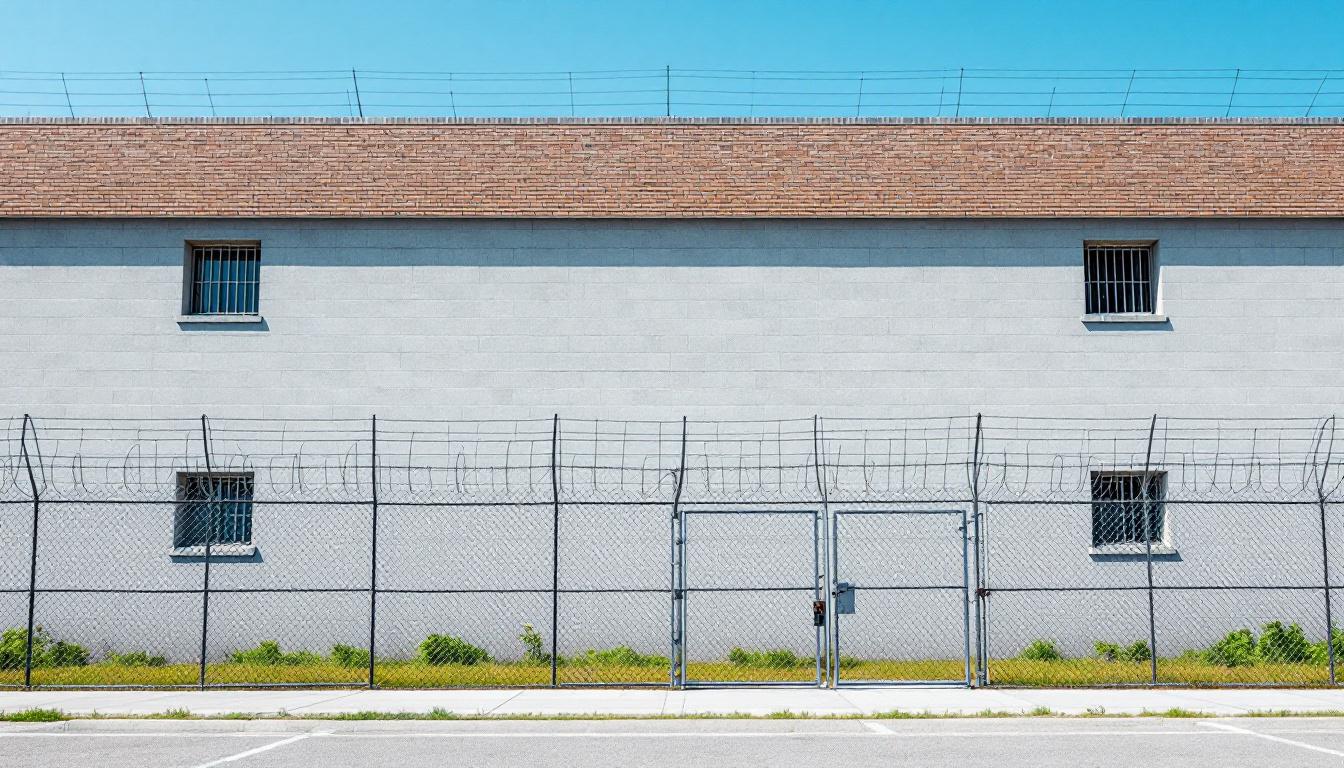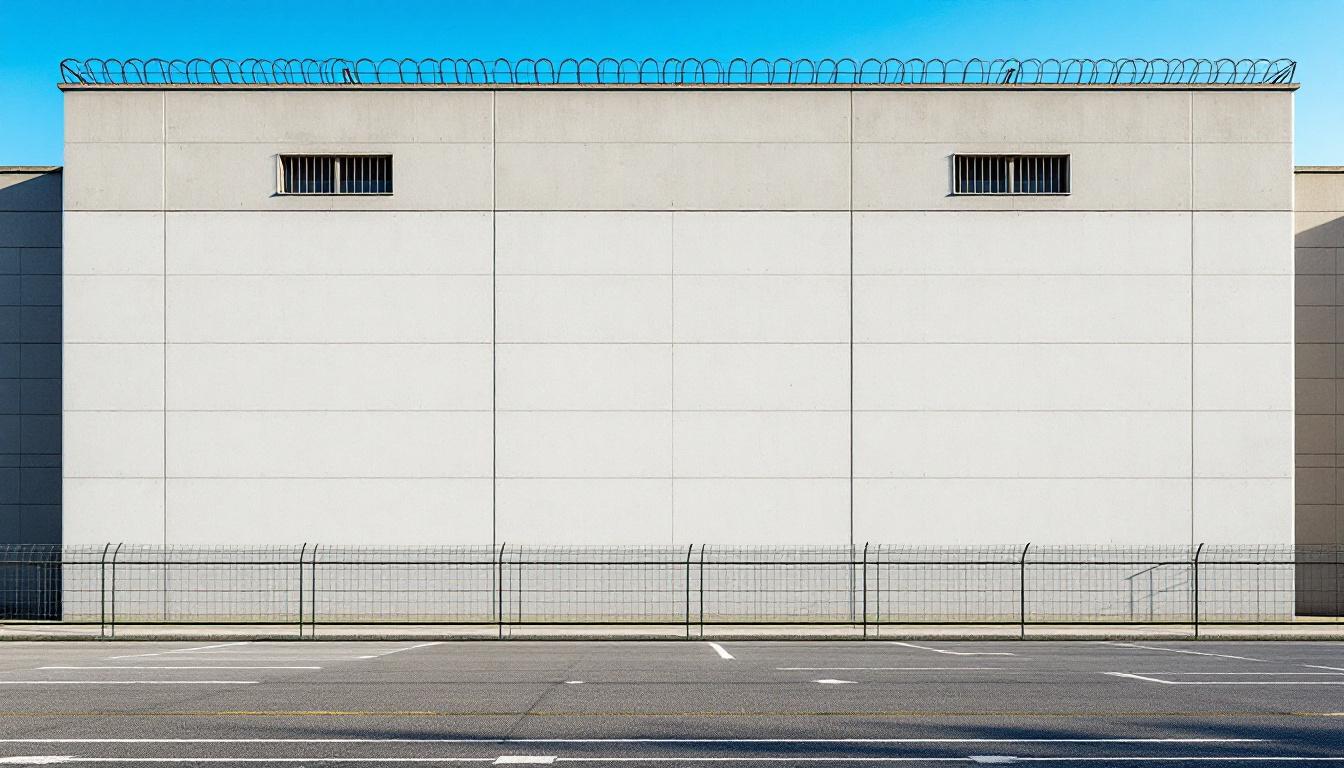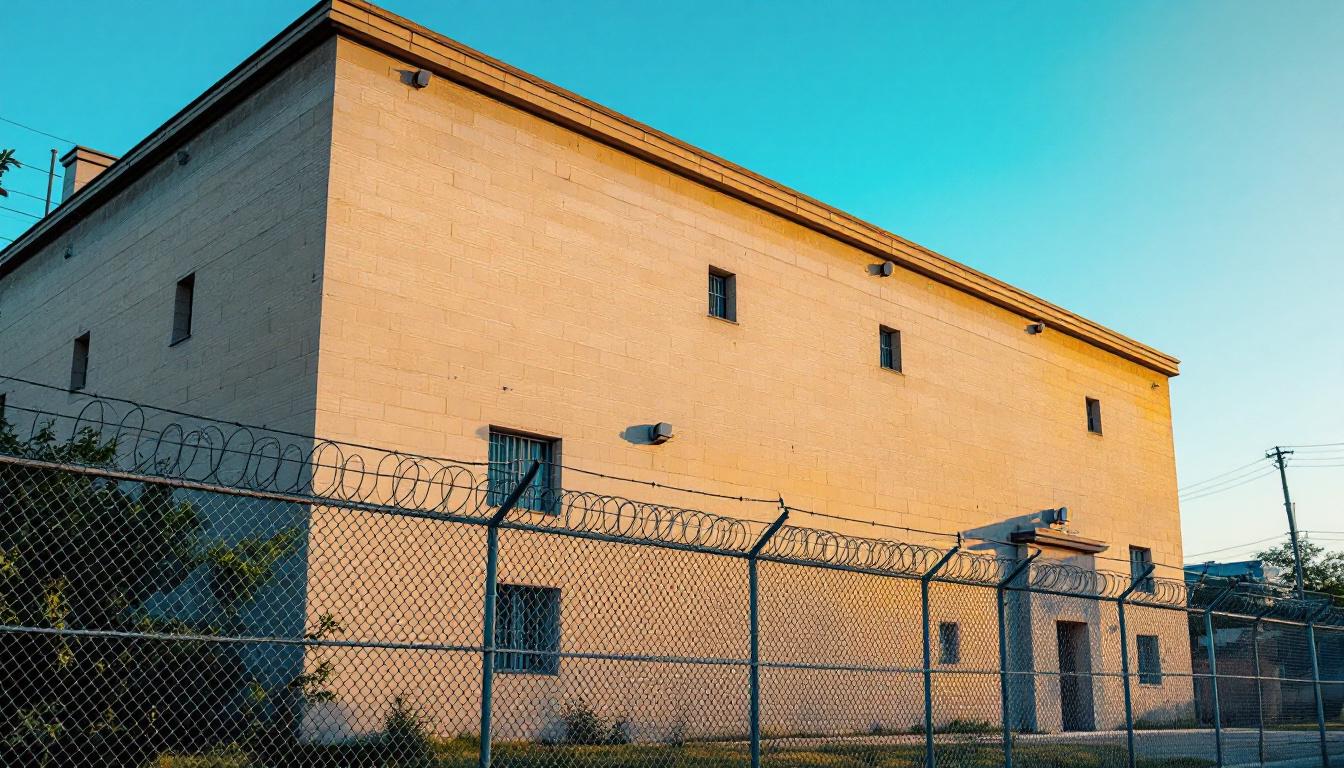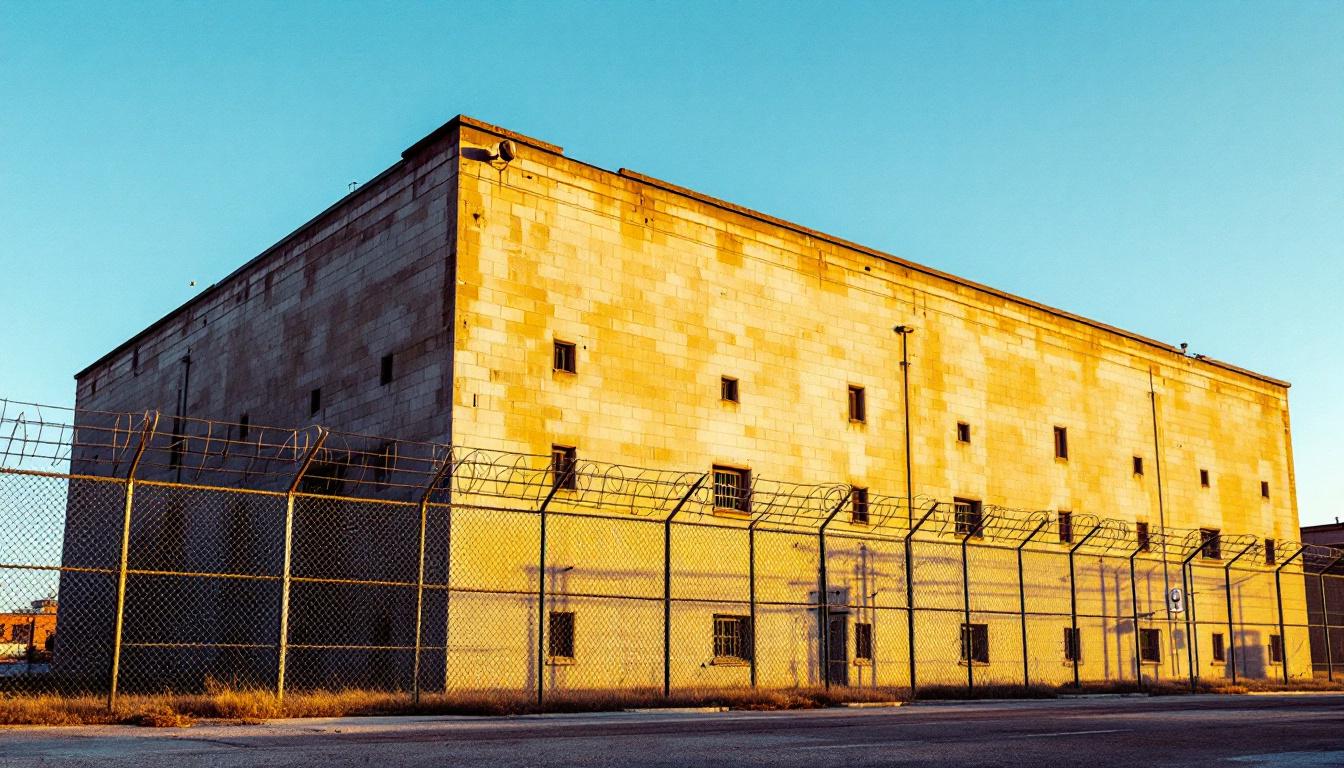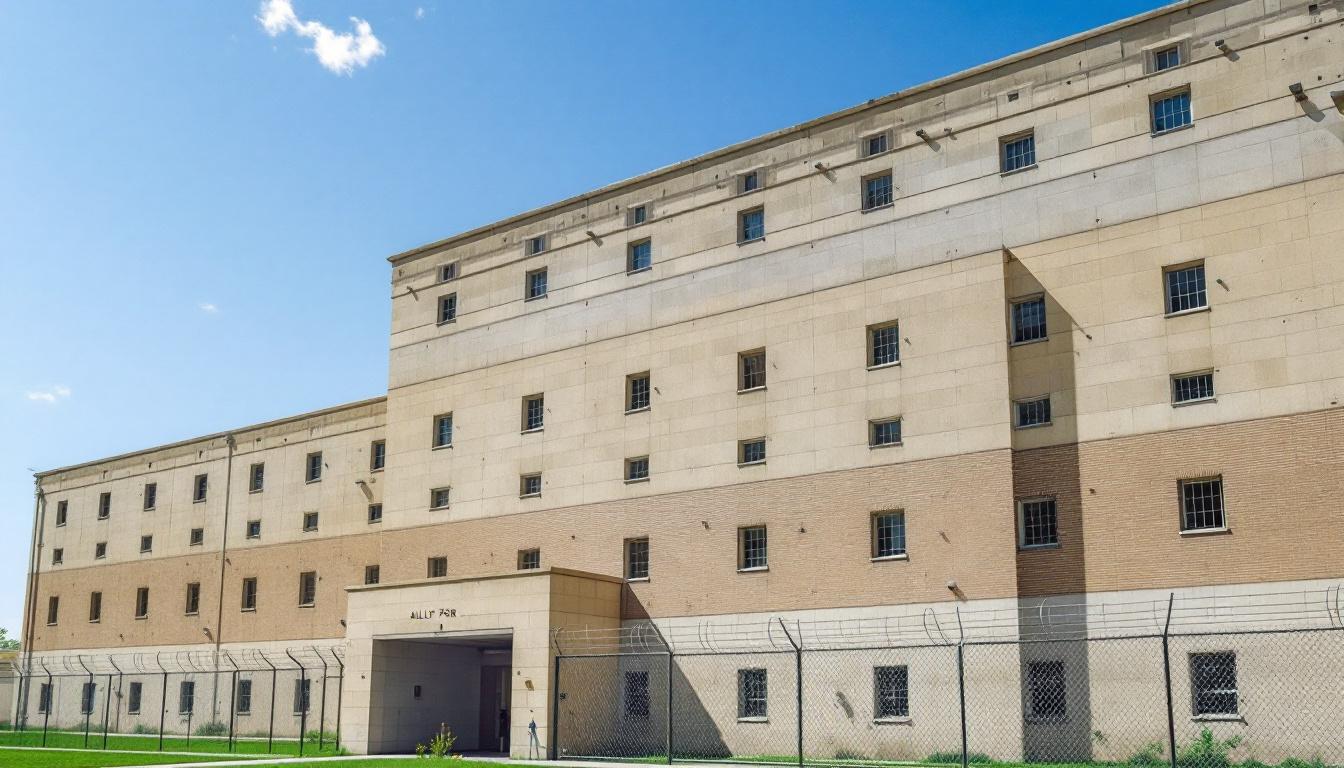
Quick Navigation
How to contact an inmate at Douglas County Jail
This comprehensive guide will walk you through how to connect with an inmate at Douglas County Jail. Follow the steps below to find an inmate and send letters and photos:
- Search for the inmate using our search tool below
- Create your account or log in to Penmate
- Write your message (up to 6,000 characters)
- Send instantly - inmates receive printed copies daily
Find an Inmate
Search for an inmate to start communicating today
Tip: You can search by first name, last name, or inmate ID number
To contact a person at Douglas County Jail start by searching for the person on the official facility website. Perform a search by following these steps:
- Step 1: Enter their first name and last name into the search form and click "Search"
- Step 2: Locate their inmate record
- Step 3: Write down their Inmate ID and any housing information provided
Important! Be sure to enter the person's full name. Nicknames should not be used.
How to Send Messages to Inmates

You can use your phone or computer to send emails, letters, and photos to an inmate. Messages are sent electronically to inmate tablets or kiosks at the facility. If you would like to send a message, start by searching for an inmate at Douglas County Jail.
Sending Photos and Postcards

A great way to send love and support to a loved one at Douglas County Jail is to send photos and postcards. It only takes a few minutes to send photos from your phone and it makes a huge difference. You can also mail postcards with words of support and inspiration, or design your own postcard for special moments like birthdays and holidays.
Important! Be sure not to send any explicit photos or they may not be approved by the facility. You can also use a photo printing app like Penmate to make sure your photos are printed at the correct size (4x6 or 3x5) and are mailed according to the rules and regulations of Douglas County Jail.
Frequently asked questions about Douglas County Jail
-
How long does it take to deliver a message?
If you're sending an email message your letter is usually delivered within 24-48 hours. For messages sent via mail you should expect delivery within 3-7 days. All messages will need be approved by Douglas County Jail.
-
How much does it cost to send a message to Douglas County Jail?
You can send a message free using your phone or mail a message via USPS for the price of a $0.60 stamp and envelope. You can also purchase credits or e-stamps from services starting at $1.99.
-
What services can I use to contact an inmate at Douglas County Jail?
Penmate
You can use Penmate to send letters and photos to an inmate from your phone. It's an easy way to stay in touch during your loved one's incarceration. Use the inmate locator to find an inmate's location and contact information, then you can send messages within a few minutes.
Securus messaging
Securus may be another option for communicating with an inmate at Douglas County Jail. You can create a friends and family account and purchase credits to send messages. All messages will be reviewed and must be approved by the facility.
JPay
Some county jails and state prisons may support sending messages with JPay. You must register an account with the system, find your loved one, and purchase stamps to send messages. For some locations you can also attach photos.
Smart Jail Mail
You may also check if Smart Jail Mail is available at Douglas County Jail. Smart Jail Mail is operated by Smart Communications and has contracted with some state and county jails. After purchasing credits, your messages and photos are sent to the facility, printed out, and then handed out to your loved one.
-
What is the mailing address of Douglas County Jail?
Mailing address:
Douglas County Jail
509 3rd Ave W
Alexandria, MN 56308
Phone: (320) 762-2139 -
What are the visiting hours at Douglas County Jail?
Visiting hours at Douglas County Jail vary by housing unit and security level. Generally, visits are scheduled on weekends and holidays, with some facilities offering weekday visits. Contact the facility directly at (320) 762-2139 or check their website for the current visiting schedule. Visits typically last 30-60 minutes and must be scheduled in advance.
-
What items are prohibited when sending mail to Douglas County Jail?
Prohibited items typically include: cash, personal checks, stamps, stickers, glitter, glue, tape, staples, paperclips, polaroid photos, musical or blank greeting cards, hardcover books, magazines with staples, and any items containing metal or electronics. Only send letters on plain white paper with blue or black ink. Photos must be printed on regular photo paper (no Polaroids). Always check with Douglas County Jail for their specific mail policies.
-
How do I send money to an inmate at Douglas County Jail?
You can send money to an inmate at Douglas County Jail through several methods: 1) Online using JPay, Access Corrections, or the facility's approved vendor, 2) Money orders mailed directly to the facility with the inmate's name and ID number, 3) Kiosks located in the facility lobby, or 4) Over the phone using a credit or debit card. Fees vary by method, typically ranging from $2.95 to $11.95 per transaction.
-
Can I schedule a video visit with an inmate at Douglas County Jail?
Many facilities now offer video visitation as an alternative to in-person visits. At Douglas County Jail, video visits may be available through services like Penmate, Securus Video Connect, GTL, or ICSolutions. Video visits typically cost $10-20 for 20-30 minutes and must be scheduled in advance. You'll need a computer or smartphone with a camera and reliable internet connection. Contact the facility for their specific video visitation policies and approved vendors.
-
What identification do I need to visit an inmate at Douglas County Jail?
All visitors must present valid government-issued photo identification such as a driver's license, state ID, passport, or military ID. Minors must be accompanied by a parent or legal guardian who can provide the minor's birth certificate. Some facilities require visitors to be on the inmate's approved visitation list, which may require a background check. Contact Douglas County Jail for specific ID requirements and visitor approval procedures.
-
How can I find out an inmate's release date?
To find an inmate's release date at Douglas County Jail, you can: 1) Use the online inmate search tool if available, 2) Call the facility's records department, 3) Contact the inmate's case manager or counselor, or 4) Have the inmate provide this information during a call or visit. For privacy reasons, some facilities only release this information to immediate family members.
Facility Overview
Official Website

About Douglas County Jail
Nestled in the heart of Alexandria, Minnesota, the Douglas County Jail, MN serves as a cornerstone facility within the state's broader correctional network, connecting rural communities with essential detention and rehabilitation services. This MN correctional facility operates with a clear mission to balance public safety needs while providing meaningful opportunities for individuals in custody to engage with programs designed to support their eventual reintegration into the community.
The facility typically maintains strong connections with local organizations and service providers throughout the Alexandria area, recognizing that effective corrections work extends far beyond secure housing. Residents services may include educational programming, substance abuse counseling, and workforce development initiatives that align with the economic and social fabric of Douglas County. The jail often collaborates with regional healthcare providers, mental health professionals, and community-based organizations to ensure comprehensive support systems are available to those in custody.
As part of Minnesota's county jail system, this correctional facility generally emphasizes rehabilitation alongside traditional detention functions, reflecting the state's progressive approach to corrections. The facility's programming philosophy typically centers on preparing individuals for successful community reentry through skill-building opportunities and therapeutic interventions. Staff members often work closely with probation services, social workers, and local employers to create pathways that may help reduce recidivism while strengthening community safety throughout the greater Alexandria region.
Programs & Services
Educational and vocational initiatives form the cornerstone of rehabilitation efforts, creating pathways for residents to develop marketable skills and academic credentials. These comprehensive programs typically recognize that sustainable reintegration requires both practical abilities and foundational knowledge. The facility's approach emphasizes building confidence through achievement while addressing the educational gaps that may have contributed to previous challenges. Staff members often work closely with residents to identify individual learning styles and career interests, ensuring that participation leads to meaningful personal growth.
Academic programming may deliver GED preparation courses, basic literacy instruction, and computer skills training to residents seeking educational advancement. These educational opportunities often include structured classroom environments where residents can focus on learning without external distractions. Additionally, vocational training initiatives typically encompass various trade skills that align with local employment opportunities, such as construction basics, food service preparation, and maintenance techniques. The hands-on nature of these programs allows residents to gain practical experience while developing work habits and professional attitudes that employers value.
Therapeutic and support initiatives address the underlying factors that often contribute to incarceration patterns. Chemical dependency treatment may offer both group and individual counseling sessions, helping residents understand addiction patterns and develop coping strategies for long-term recovery. Anger management programming typically focuses on teaching residents how to recognize triggers and respond to challenging situations more effectively. Additionally, mentoring programs often connect residents with community volunteers who provide guidance and encouragement throughout the rehabilitation process. The facility may also deliver animal care programs, which research suggests can reduce stress while teaching responsibility and empathy. Decision-making skills workshops typically round out these offerings, providing residents with practical tools for evaluating choices and considering consequences before returning to their communities.
Daily Life & Visitation
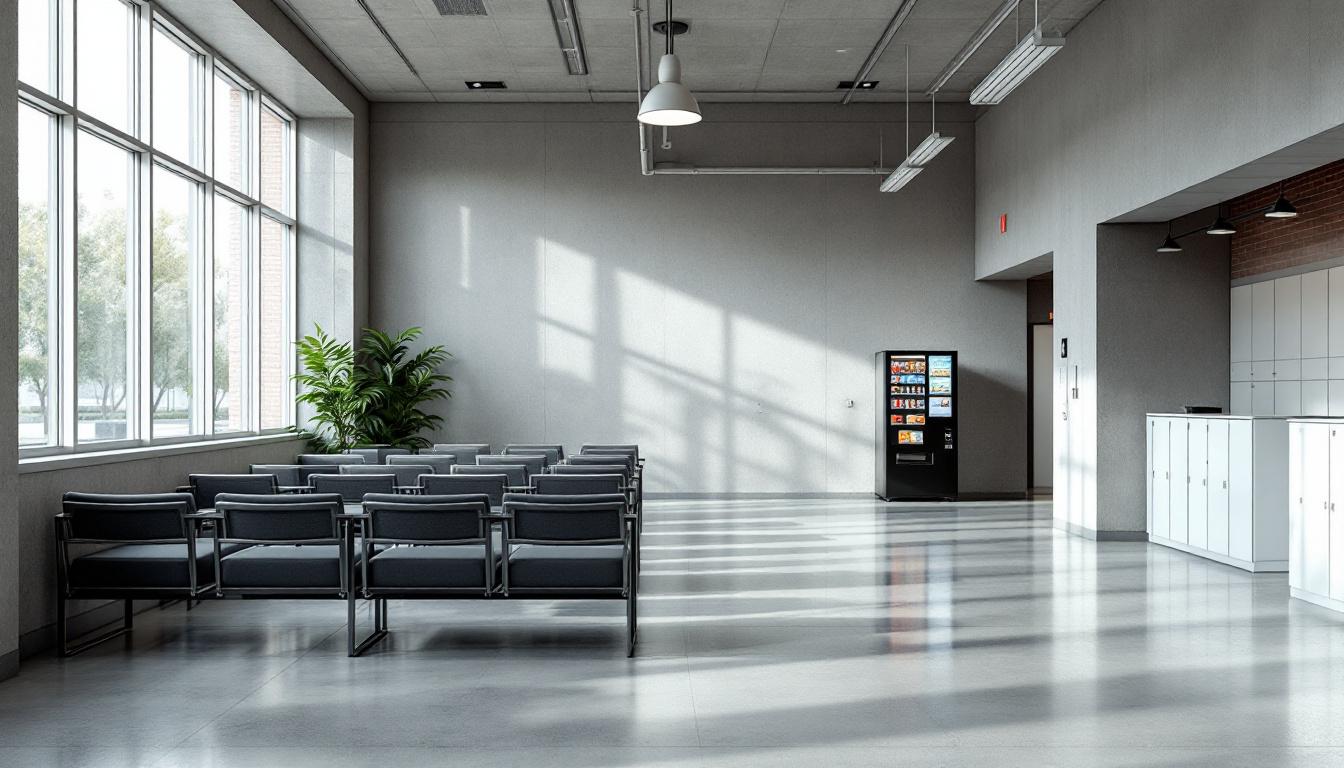
Structure now anchors every aspect of daily life, with residents following carefully planned schedules that begin early each morning and continue throughout the day. Wake-up calls typically occur before dawn, followed by scheduled meal times, work assignments, and programming activities that deliver consistency and purpose. This routine regularly provides residents with a framework that helps them navigate their time while maintaining personal responsibility and accountability.
Living accommodations at Douglas County Jail generally consist of housing units designed to accommodate multiple residents, with individual sleeping areas and shared common spaces. Residents typically have access to basic personal items and may purchase additional necessities through the commissary system. Meals are usually served in designated dining areas at scheduled times, with menus that aim to meet nutritional requirements while accommodating various dietary needs and restrictions when possible.
Additionally, the facility often provides recreational opportunities that may include exercise periods, television viewing, and structured programming designed to support personal development. While security protocols govern daily activities, residents can typically maintain contact with family members through scheduled visitation periods and telephone access. Work assignments within the facility may include kitchen duties, cleaning responsibilities, and maintenance tasks that help residents develop skills while contributing to facility operations. These structured elements work together to create an environment where residents can focus on preparing for their eventual return to the community.
Ready to Connect?
Start communicating with your loved one today
Search for an Inmate
